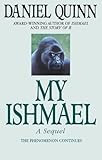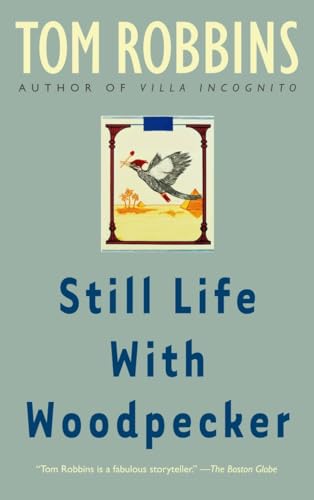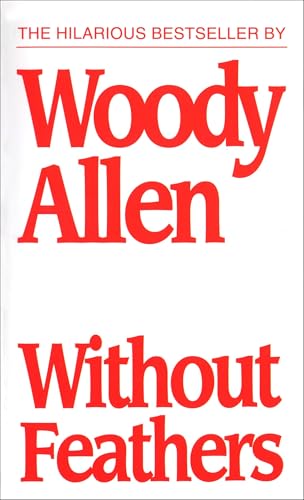
On a recent foray into the deepest, dankest corners of my basement, I came across a box of college mementoes — old photographs, bottlecaps, blue-book exams. As I dug through the strata, I uncovered a largely-forgotten treasure: a stack of novels that I’d read and loved as an idealistic, horny, often hungover student. These books helped usher me from my teens into adulthood — and opened my eyes to the breadth, and often the harshness, of the surrounding world. I’d adored these books. So why had I left them in this box, like discarded memories? Looking through them again, I may have found the answer.
Dancing Soup with Coyote Girl • Tom Robbins

 As a sophomore, I discovered Robbins’s Another Roadside Attraction and was blown back by his sentences’ studied freedom and his generous worldview. I quickly read Still Life With Woodpecker and enjoyed it slightly less; Skinny Legs and All, less still. By the time I got to Jitterbug Perfume, I was openly annoyed by the patchouli miasma that hovered over everything. The last Robbins book I read was Dancing Soup With Coyote Girl, published in 1992. The more Coyote Girl I read, the more I felt almost physically ill, as if a sketchy-bearded hippie was talking me through a brown-acid trip. I couldn’t finish the book. And when I saw Dancing Soup With Coyote Girl’s long-forgotten cover — a purple can of mushroom soup hovering above a desert mesa — I had a sweaty flashback that left me shivering under the utility sink.
As a sophomore, I discovered Robbins’s Another Roadside Attraction and was blown back by his sentences’ studied freedom and his generous worldview. I quickly read Still Life With Woodpecker and enjoyed it slightly less; Skinny Legs and All, less still. By the time I got to Jitterbug Perfume, I was openly annoyed by the patchouli miasma that hovered over everything. The last Robbins book I read was Dancing Soup With Coyote Girl, published in 1992. The more Coyote Girl I read, the more I felt almost physically ill, as if a sketchy-bearded hippie was talking me through a brown-acid trip. I couldn’t finish the book. And when I saw Dancing Soup With Coyote Girl’s long-forgotten cover — a purple can of mushroom soup hovering above a desert mesa — I had a sweaty flashback that left me shivering under the utility sink.
Monsters of Privilege • Bret Easton Ellis

 Of all the Ellis novels I ripped through in college — American Psycho, Glamorama, Less Than Zero — I remember very little about Monsters of Privilege aside from the fact that it featured hard drugs, an anorexic girl seeming to die without anyone caring, and lots of dead-eyed sex. As I flipped through my copy — the cover shows a backlit silhouette of a high-cheeked young man and a bold san-serif font — my eye landed on a passage that seemed representative: “Derek looked around, blood draining from the wound. The glass vase lay smashed on the Italian marble. ‘I need some coke,’ Derek muttered to the empty foyer. Out by the pool, someone had put on a Tears for Fears cassette.”
Of all the Ellis novels I ripped through in college — American Psycho, Glamorama, Less Than Zero — I remember very little about Monsters of Privilege aside from the fact that it featured hard drugs, an anorexic girl seeming to die without anyone caring, and lots of dead-eyed sex. As I flipped through my copy — the cover shows a backlit silhouette of a high-cheeked young man and a bold san-serif font — my eye landed on a passage that seemed representative: “Derek looked around, blood draining from the wound. The glass vase lay smashed on the Italian marble. ‘I need some coke,’ Derek muttered to the empty foyer. Out by the pool, someone had put on a Tears for Fears cassette.”
Garbageman • Charles Bukowski

 Bukowski’s third novel, the autobiographical Garbageman, is about Los Angeles trash collector Henry Chinaski, who, when not working for the city’s Public Works Authority, writes short stories on a broken typewriter in his grimy cold-water flat. Chinaski rages against his circumscribed lot with a steady, heroic intake of hard booze and cheap women, unconcerned by the bleakness of it all. While some have criticized Garbageman as a carbon-copy of much of his other work — Post Office and Factotum come to mind — the differences are obvious. In Post Office, he’s a postal worker, and in Factotum, he’s a factotum (or handyman). In Garbageman, he’s a…well, I won’t ruin it for you.
Bukowski’s third novel, the autobiographical Garbageman, is about Los Angeles trash collector Henry Chinaski, who, when not working for the city’s Public Works Authority, writes short stories on a broken typewriter in his grimy cold-water flat. Chinaski rages against his circumscribed lot with a steady, heroic intake of hard booze and cheap women, unconcerned by the bleakness of it all. While some have criticized Garbageman as a carbon-copy of much of his other work — Post Office and Factotum come to mind — the differences are obvious. In Post Office, he’s a postal worker, and in Factotum, he’s a factotum (or handyman). In Garbageman, he’s a…well, I won’t ruin it for you.
The Gutter • Hubert Selby, Jr.
What I’d consider to be Selby’s lightest, frothiest novel, The Gutter follows the exploits of a heroin-addicted gigolo named Bunny. At the book’s outset, we find Bunny writhing in a flophouse basement, covered in blood and vomit while scratching at infected boils. Two hundred forty-seven pages later, Bunny is near death, “bad skag” spreading through his veins, spittle at his purple lips, as he moans in the titular gutter. “I always wanted to write a comedy,” Selby said to The New York Review of Books in 1987, upon The Gutter’s publication. “This is my Without Feathers.”
Ishmael 3: Going Ape • Daniel Quinn

 I read the gorilla-philosophy classic Ishmael at the precise moment I should have, when I was about 19 and, like its narrator, had “an earnest desire to save the world.” Its message — basically, that we’re a species of selfish bastards, and we need to stop hacking everything to pieces — seemed sound, and I became a vegetarian not long after reading it. A sequel, My Ishmael, offered more of the same, and I responded in kind, cutting dairy from my diet and riding my 10-speed everywhere, no matter the distance. I was nearly at my limit — and the Gaia-minded self-sacrifice urged in Ishmael 3: Going Ape pushed me over the edge. After reading it, I sought out a remote yurt-based community, where we drank home-brewed scallionmilk and fashioned socks from dryer lint. It was a rough period, to say the least (it was the year of the Great Eastern Chigger Invasion), and as the memories flooded back, I shoved Ishmael 3: Going Ape into the deepest recesses of the box, along with its companions: the Selby, the Ellis, the Bukowski, the Robbins. I sealed it with fresh tape, hurried up the basement steps, and shut off the light. Upstairs, slightly shaken, I laid on my living-room couch and continued reading a book that, I’m positive, will never seem embarrassing in retrospect.
I read the gorilla-philosophy classic Ishmael at the precise moment I should have, when I was about 19 and, like its narrator, had “an earnest desire to save the world.” Its message — basically, that we’re a species of selfish bastards, and we need to stop hacking everything to pieces — seemed sound, and I became a vegetarian not long after reading it. A sequel, My Ishmael, offered more of the same, and I responded in kind, cutting dairy from my diet and riding my 10-speed everywhere, no matter the distance. I was nearly at my limit — and the Gaia-minded self-sacrifice urged in Ishmael 3: Going Ape pushed me over the edge. After reading it, I sought out a remote yurt-based community, where we drank home-brewed scallionmilk and fashioned socks from dryer lint. It was a rough period, to say the least (it was the year of the Great Eastern Chigger Invasion), and as the memories flooded back, I shoved Ishmael 3: Going Ape into the deepest recesses of the box, along with its companions: the Selby, the Ellis, the Bukowski, the Robbins. I sealed it with fresh tape, hurried up the basement steps, and shut off the light. Upstairs, slightly shaken, I laid on my living-room couch and continued reading a book that, I’m positive, will never seem embarrassing in retrospect.
Image Credit: Flickr/Angelo Yap.


















